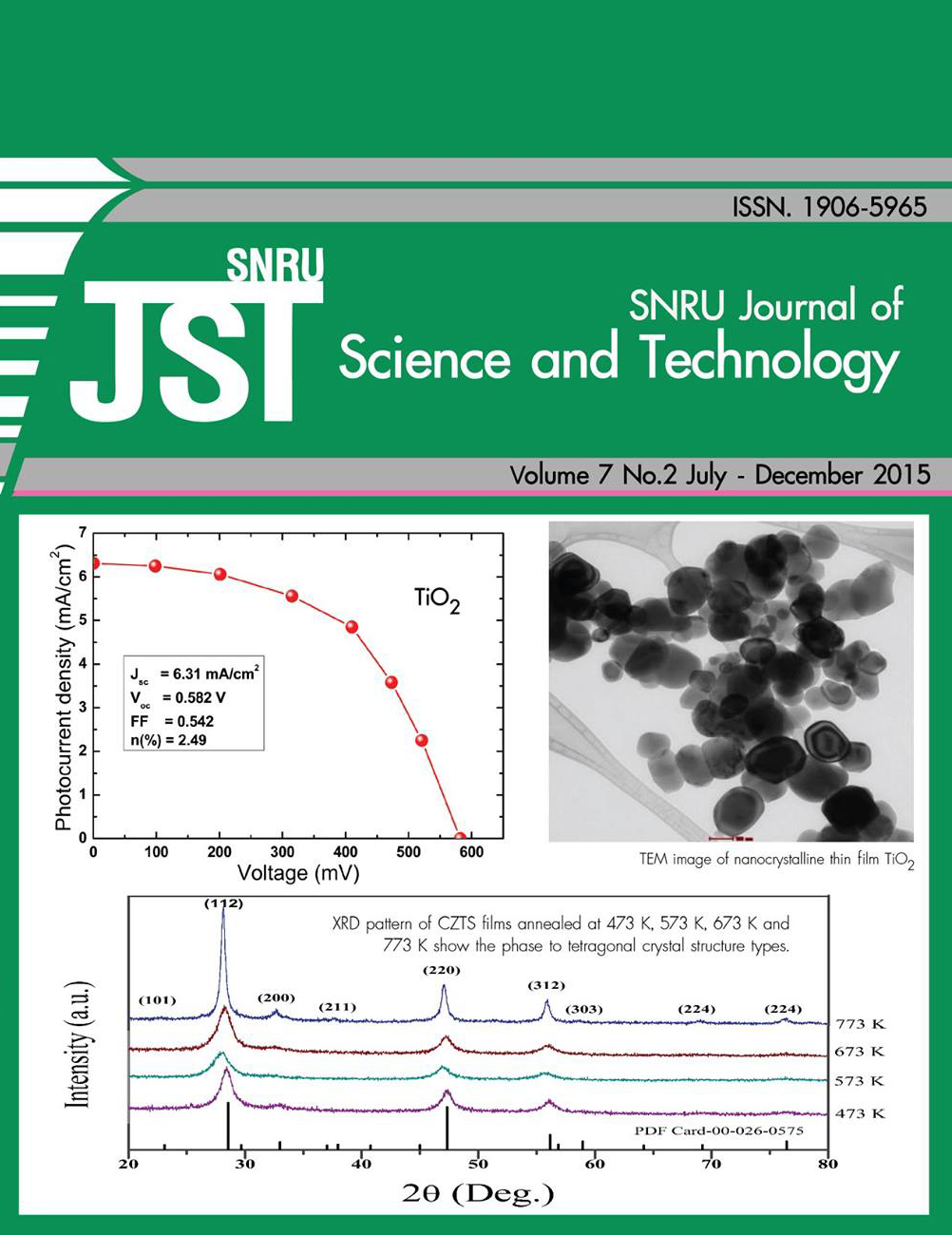Dye sensitized solar cells based on solid state electrolyte with poly (styrene-co-acrylonitril)
Keywords:
Dye sensitized solar cells, Solid state electrolytes, Energy conversion efficiency, Iodide salt potassium, IodineAbstract
Solid state electrolytes consisting of iodide salt potassium (KI) and iodine (I2) dissolved in poly (styrene – co- acrylonitrile (P(S-A))) were prepared by mixtures method and applied to dye sensitized solar cells. The cells were coated a conducting glass sheet (TCO) by means of doctor blade technique. The solid state polymer electrolytes were prepared by adding iodide salt potassium (KI) and iodine (I2) into solid state polymer electrolyte composed of 1, 2, 4, 5 – tetrakisbromomethyl benzene (TB), propylene carbonate (PC), 1-methyl-3-propylimidazodium iodide (MPI), poly (styrene – co – acrylonitrile) (P(S-A)) and ethylene carbonate (EC). The solid state electrolytes mixtures became homogenous and could not flow under sintering at temperature of 70-80 °C. The dye sensitized solar cells based on the solid state electrolytes with poly (styrene-co-acrylonitril) yielded an open- circuit voltage ( ), the short-circuit current density ( ), fill factor of 0.582 V, 6.31 mA/cm2, and 0.542, respectively, and overall light to electrical energy conversion efficiency of 2.49 %, under irradiation of 80 mW/cm2.









